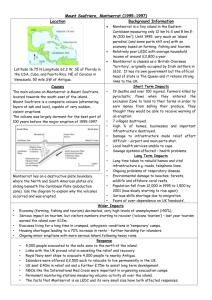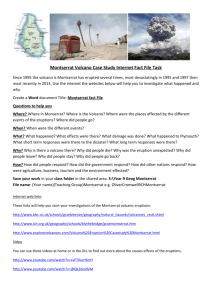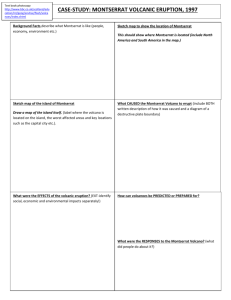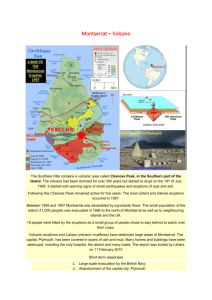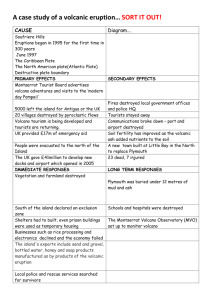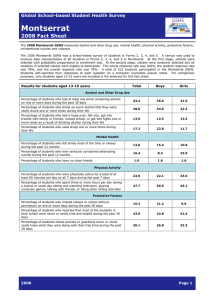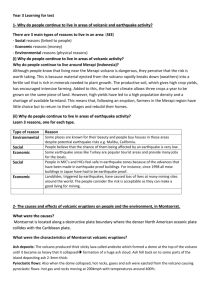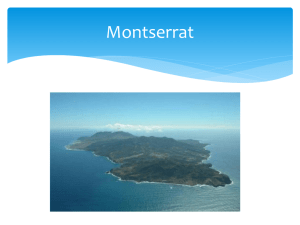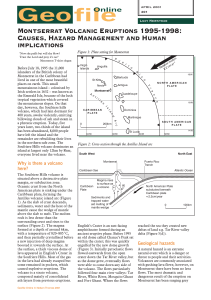Mount Soufriere, Montserrat (1995-1997)
advertisement
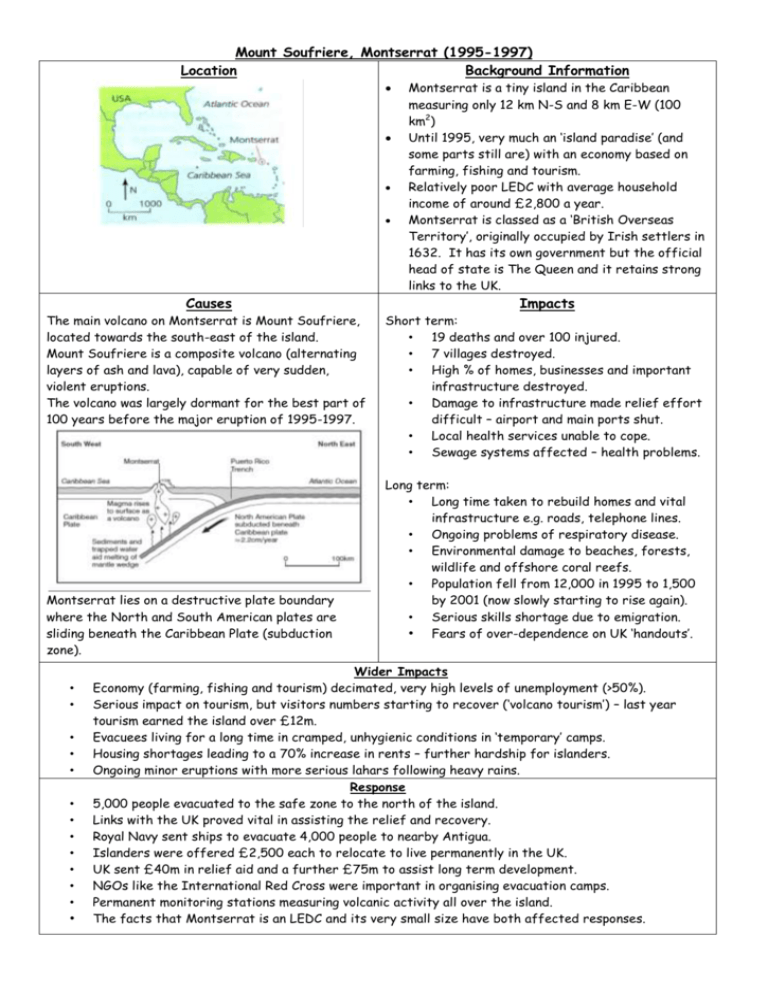
Mount Soufriere, Montserrat (1995-1997) Location Background Information Montserrat is a tiny island in the Caribbean measuring only 12 km N-S and 8 km E-W (100 km2) Until 1995, very much an ‘island paradise’ (and some parts still are) with an economy based on farming, fishing and tourism. Relatively poor LEDC with average household income of around £2,800 a year. Montserrat is classed as a ‘British Overseas Territory’, originally occupied by Irish settlers in 1632. It has its own government but the official head of state is The Queen and it retains strong links to the UK. Causes Impacts The main volcano on Montserrat is Mount Soufriere, located towards the south-east of the island. Mount Soufriere is a composite volcano (alternating layers of ash and lava), capable of very sudden, violent eruptions. The volcano was largely dormant for the best part of 100 years before the major eruption of 1995-1997. Short term: • 19 deaths and over 100 injured. • 7 villages destroyed. • High % of homes, businesses and important infrastructure destroyed. • Damage to infrastructure made relief effort difficult – airport and main ports shut. • Local health services unable to cope. • Sewage systems affected – health problems. Montserrat lies on a destructive plate boundary where the North and South American plates are sliding beneath the Caribbean Plate (subduction zone). • • • • • • • • • • • • • Long term: • Long time taken to rebuild homes and vital infrastructure e.g. roads, telephone lines. • Ongoing problems of respiratory disease. • Environmental damage to beaches, forests, wildlife and offshore coral reefs. • Population fell from 12,000 in 1995 to 1,500 by 2001 (now slowly starting to rise again). • Serious skills shortage due to emigration. • Fears of over-dependence on UK ‘handouts’. Wider Impacts Economy (farming, fishing and tourism) decimated, very high levels of unemployment (>50%). Serious impact on tourism, but visitors numbers starting to recover (‘volcano tourism’) – last year tourism earned the island over £12m. Evacuees living for a long time in cramped, unhygienic conditions in ‘temporary’ camps. Housing shortages leading to a 70% increase in rents – further hardship for islanders. Ongoing minor eruptions with more serious lahars following heavy rains. Response 5,000 people evacuated to the safe zone to the north of the island. Links with the UK proved vital in assisting the relief and recovery. Royal Navy sent ships to evacuate 4,000 people to nearby Antigua. Islanders were offered £2,500 each to relocate to live permanently in the UK. UK sent £40m in relief aid and a further £75m to assist long term development. NGOs like the International Red Cross were important in organising evacuation camps. Permanent monitoring stations measuring volcanic activity all over the island. The facts that Montserrat is an LEDC and its very small size have both affected responses.
